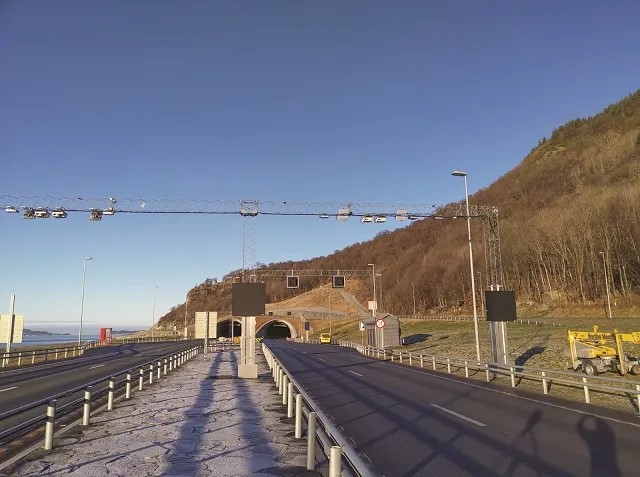Automatic incident detection (AID) manufacturer Navtech Radar has ventured into the tunnels of Norway and has supplied its radar-based ClearWay solution for the sub-sea 4.5 km long Mastrafjord Tunnel and the 5.8 km long tolled Byfjord Tunnel near Stavanger in Norway as part of a recently-completed tunnel refurbishment project.
Radar AID was specified by consultants Multiconsult and following a tender process, systems integrator Trafsys was the winning bidder with the ClearWay solution.
Multiconsult s
November 27, 2014
Read time: 2 mins
Automatic incident detection (AID) manufacturer 819 Navtech Radar has ventured into the tunnels of Norway and has supplied its radar-based ClearWay solution for the sub-sea 4.5 km long Mastrafjord Tunnel and the 5.8 km long tolled Byfjord Tunnel near Stavanger in Norway as part of a recently-completed tunnel refurbishment project.
Radar AID was specified by consultants Multiconsult and following a tender process, systems integrator Trafsys was the winning bidder with the ClearWay solution.
Multiconsult senior engineer Lars Martin Rage explains, “One of the key requirements was AID capability in very harsh weather conditions of snow, rain and fog around the tunnel entrances where sunlight can be a problem. We also needed a low-maintenance solution throughout the tunnel with a very low rate of false alarms.”
Dr Stephen Clark, technical director of Navtech Radar says, “The Nordic countries have introduced radar-based technology in a number of schemes. The Mastrafjord and Byfjord tunnels are exciting examples of recent projects that have successfully embraced our technology solution.”
Radar AID was specified by consultants Multiconsult and following a tender process, systems integrator Trafsys was the winning bidder with the ClearWay solution.
Multiconsult senior engineer Lars Martin Rage explains, “One of the key requirements was AID capability in very harsh weather conditions of snow, rain and fog around the tunnel entrances where sunlight can be a problem. We also needed a low-maintenance solution throughout the tunnel with a very low rate of false alarms.”
Dr Stephen Clark, technical director of Navtech Radar says, “The Nordic countries have introduced radar-based technology in a number of schemes. The Mastrafjord and Byfjord tunnels are exciting examples of recent projects that have successfully embraced our technology solution.”










